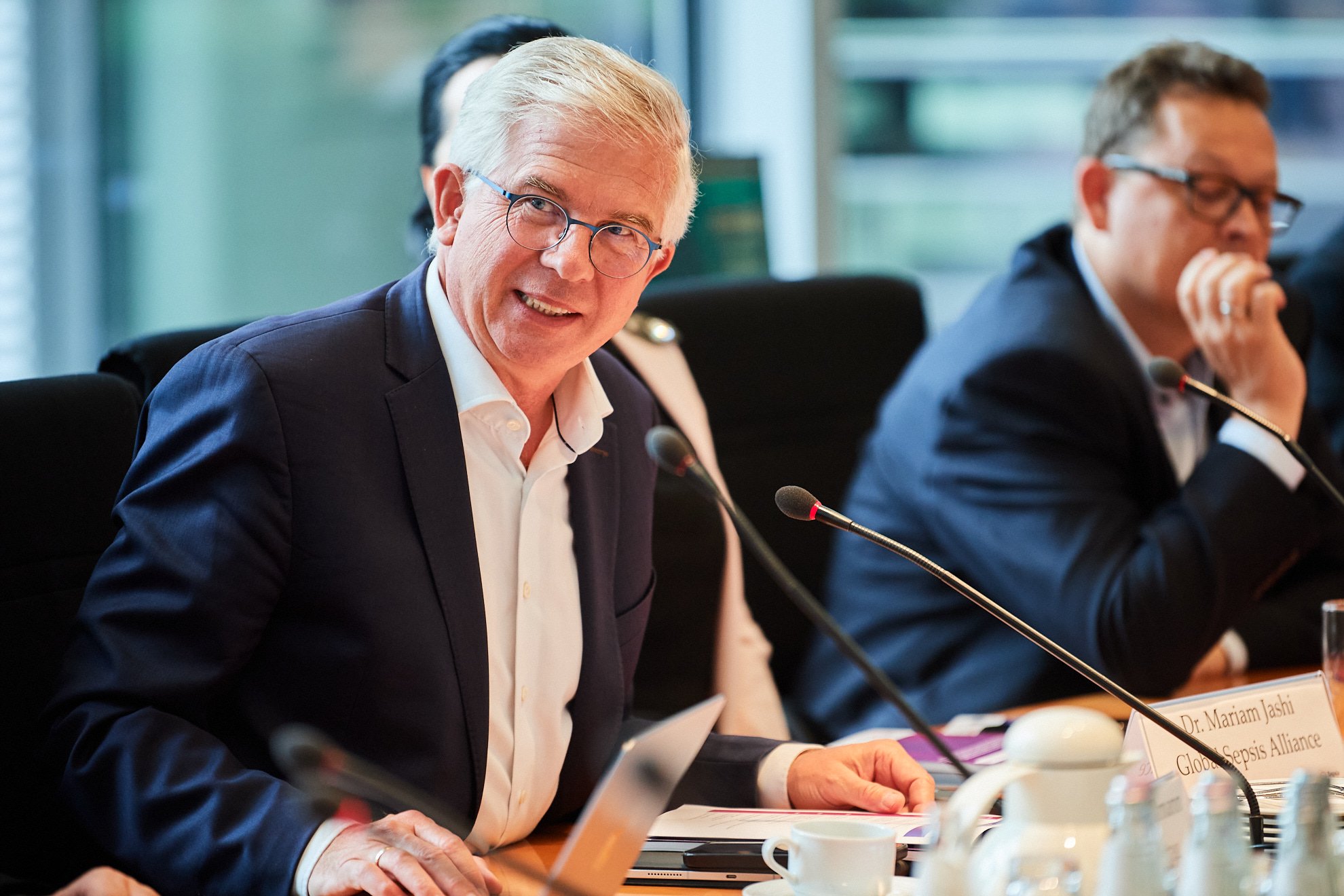The Global Sepsis Alliance expresses its gratitude to Prof. Dr. Andrew Ullmann, the Global Health Sub-Committee Chair in the German Bundestag, UNITE Parliamentarians Network for Global Health, Virchow Foundation, and Sepsis Stiftung for the successful launch of the 2030 Global Agenda for Sepsis at the German Parliament on September 10, 2024.
We were honored with a special video address from Dr. Tedros Adhanom Ghebreyesus – Director-General of the World Health Organization – for this historic event. The GSA and our Regional Sepsis Alliances sincerely appreciate that Dr. Tedros congratulated the Global Sepsis Alliance for the launch of the 2030 Global Agenda for Sepsis and thanked for the close partnership and leadership.
The Global Sepsis Alliance hereby reaffirms its gratitude to the staff of the Geneva Headquarters and Regional Offices of the World Health Organization for their technical inputs to the document, and our readiness for continued collaboration in strengthening the global sepsis response in line with respective World Health Assembly resolutions and WHO guidance.
We are grateful to Stefan Schwartze, the Federal Government Commissioner for Patients, and the Members of German Bundestag for attending the official launch of the 2030 Global Agenda for Sepsis.
Prof. Konrad Reinhart, Founding President of the GSA, and Dr. Mariam Jashi, CEO of the Global Sepsis Alliance and a former Member of Parliament of Georgia, were joined by the following distinguished speakers and participants:
Mr. Roland Göhde, Co-founder and CEO of the Virchow Foundation and CEO of the German Health Alliance
Dr. Hans Henri P. Kluge, WHO Regional Director for Europe (Video Address)
Prof. Dr. Axel R. Pries, President, World Health Summit
Dr. Rudi Eggers, Director, Director Integrated Health Services, World Health Organization
Prof. Djillali Annane, Dean, Faculty of Medicine, University of Versailles Saint-Quentin-en-Yvelines
The central piece of the meeting was the testimony from Mariah McKimbrough, an artist and sepsis survivor living in Fürth who has recently joined the Sepsis Stiftung as its Art Director.
Over 50 representatives from multiple stakeholders attended the Bundestag event, including from the Embassies of Brazil, Georgia, France, United Arab Emirates, healthcare institutions, private sector, and civil society.
We look forward to strengthening existing collaborations and building new partnership alliances for implementing the 2030 Agenda for Sepsis and saving millions of lives from preventable deaths and disabilities.






























Next Steps: Endorsing the 2030 Global Agenda for Sepsis
Over 70 stakeholders from Africa, Asia-Pacific, Eastern Mediterranean, Europe, Latin and North America, and the Caribbeans, have been engaged in the strategic dialogue for the formulation of the 2030 Global Agenda for Sepsis.
Before its official launch at Bundestag, this first multi-year global strategy for sepsis had received contributions and endorsements from 29 stakeholders from national, regional, and global levels.
The Global Sepsis Alliance is delighted to publish the 2030 Global Agenda for Sepsis for the public domain and to invite interested stakeholders for the official endorsement and support of the document.
The Global Sepsis Alliance will keep you posted on the progress towards the implementation of the 2030 Agenda.
In the meantime, we look forward to hearing from interested actors in the field – public, private, academic, and civil society partners to join us in Making Sepsis the Next Success Story in Global Health.




















